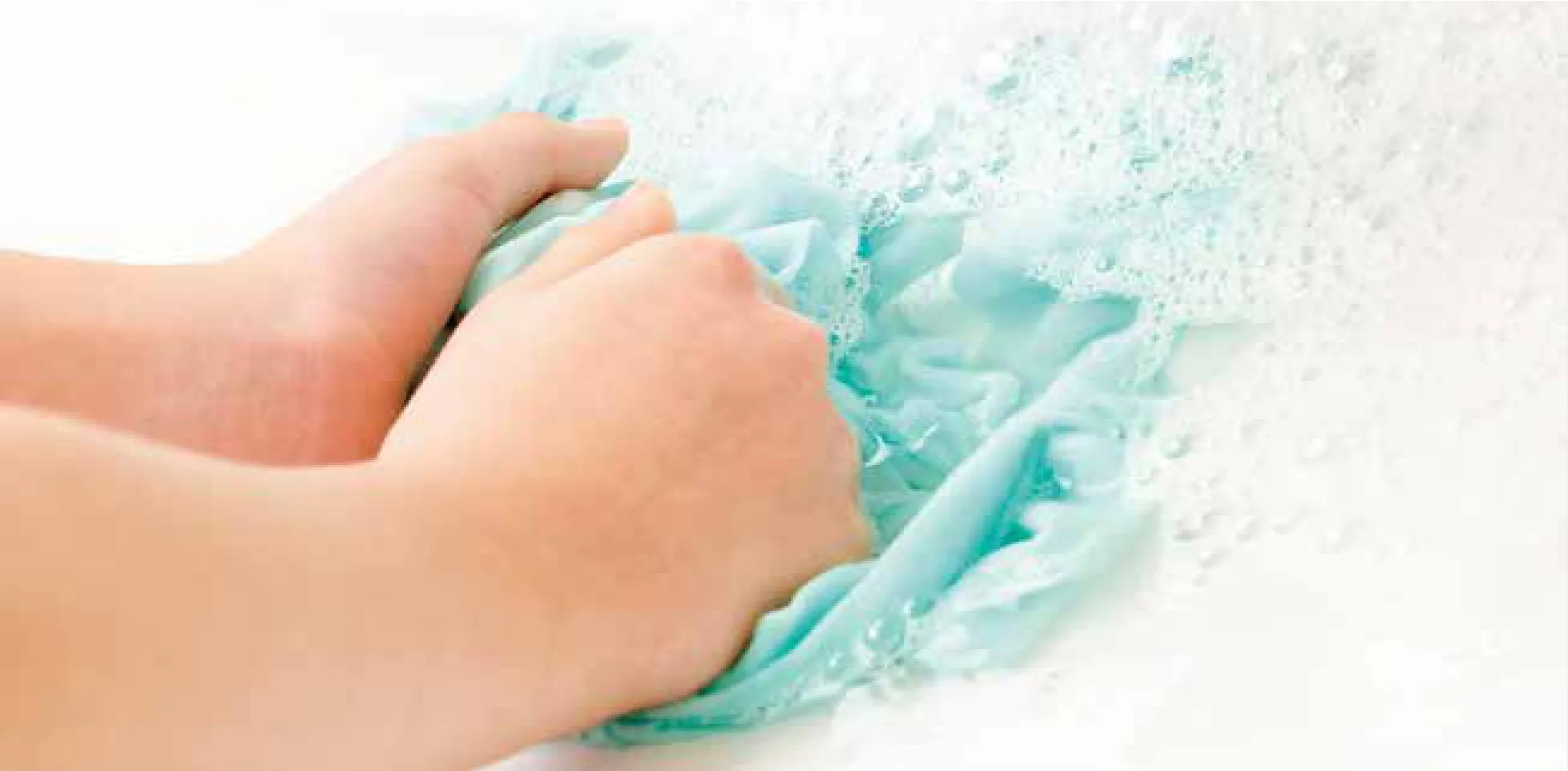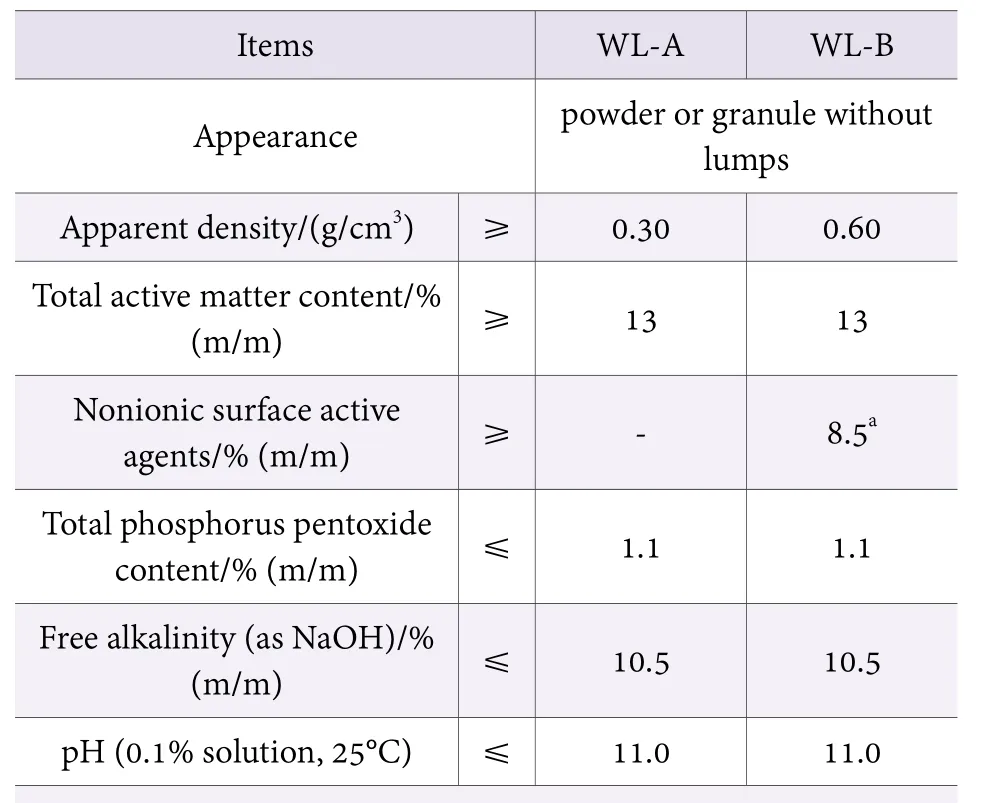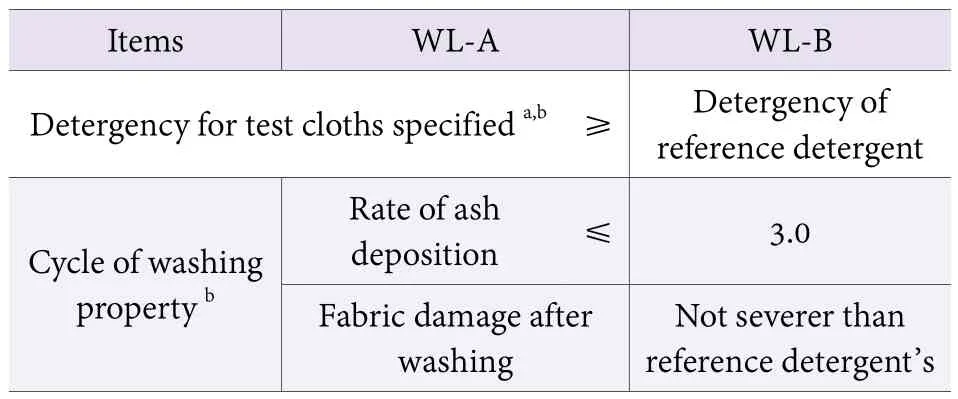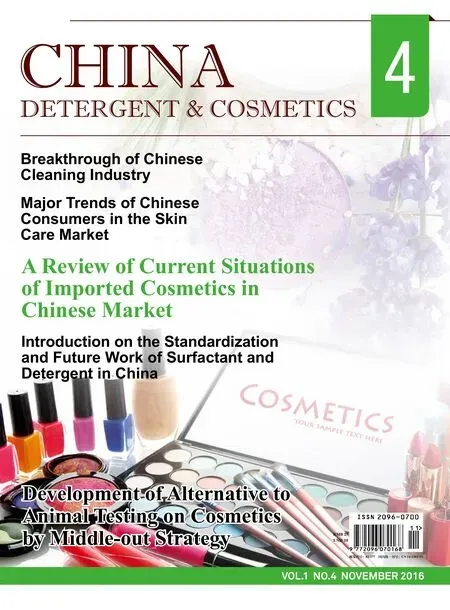National Standard of Laundry Powders (Phosphate Free)
General Administration of Quality Supervision, Inspection and Quarantine of the People’s Republic of China Standardization Administration of the People’s Republic of China

Foreword
This national standard GB/T 13171-2009 Laundry Powders is issued on 15 Dec, 2009, and implemented on 1 May, 2010. It is divided into two parts:
— GB/T 13171.1 Laundry Powders (phosphorous)
— GB/T 13171.2 Laundry Powders (phosphate free)
This section is Part 2 of GB/T 13171.
This section will replace the laundry powders (phosphate free) part of GB/T 13171-2004 Laundry Powders from the implementation date.
In comparison with laundry powders (phosphate free) part of GB/T 13171-2004 Laundry Powders, the significant changes of this section are as follows:
— the requirement for total active matter in concentrated laundry powders has been refined.
— the requirement for assessment of fabric damage after washing has been added.
The section was proposed by China National Light Industry Council.
The section is under the jurisdiction of National Technical Committee 272 on Surfactant and Detergent of Standardization Administration of China.
The section was drafted by the National Detergent Quality Supervision and Inspection Center (Taiyuan), China Research Institute of Daily Chemical Industry and Shanghai Hutchison Whitecat Company Limited.
The main drafters of the section are Chenzhi Yao, Xiaohui Li and Lei Zhang.
The previous standards replaced are as follows: GB/T 13171-1991, GB/T 13171-1997, GB/T 13171-2004.
Scope
The section specifies types, codes, requirements, test methods, inspecting rules, marks, packaging, transport and storage of the laundry powders (phosphate free).
The section is applicable to the laundry powders without phosphates in formulation.
Normative references
The following normative documents contain provision which, through reference in this text, constitute provisions of this section of GB/T13171. For dated references, subsequent amendments (excluding corrigendum contents), or revisions of any of these publications do not apply. However, parties to agreements based on this section are encouraged to investigate the possibility of applying the most recent editions of the normative documents indicated below. For undated references, the latest edition of the normative document referred to applies.
GB/T 6368 Surface Active Agents —Determination of pH of Aqueous Solution —Potentiometric Method.
GB/T 13171.1-2009 Laundry Powders (phosphorous).
GB/T 13173-2008 Surface Active Agents —Detergents—Testing Methods.
GB/T 13174 Determination of Detergency and Cycle of Washing Property for Laundry Detergents.
GB/T 15818 Test Method for Biodegradability of Surfactants.
QB/T 2951 Inspecting Rules for Detergent Products.
QB/T 2952 Requirements for Detergent Marks and Packaging.
JJF 1070-2005 Rules of Metrological Testing for Net Quantity of Products in Prepackages with Fixed Content.
Order No. 75 [2005] of General Administration of Quality Supervision, Inspection and Quarantine Measures for the measurement supervision and administration of prepackaged commodities with fixed content.
Types, codes, marks
The laundry powders (phosphate free) specified in the Standard are divided into conventional type (A) and concentrated type (B), with codes as follows:
(A) WL-A – Conventional laundry powders (phosphate free).
(B) WL-B – Concentrated laundry powders (phosphate free).
Requirements
Material requirements
The biodegradability of surfactants in product formula-tion shall not be less than 90%, and the procedure shall be generally acknowledged environmentally friendly (propylene tetramer alkylbenzene sulfonate and alkylphenol polyoxyethylene should not be used).
Physicochemical properties
Physicochemical properties of laundry powders (phosphate free) shall follow the Table 1.

Table 1. Physicochemical properties of laundry powders(phosphate free)
Using properties
Using properties of laundry powders (phosphate free)shall follow the Table 2.

Table 2. Using properties of laundry powders(phosphate free)
Requirements for quantitative packaging
Net quantity of products in small prepackages shall meet the specifications of Order No. 75 [2005] of General Administration of Quality Supervision, Inspection and Quarantine.
Test methods
General
Unless otherwise specified, during the analysis, use only reagents of recognized analytical grade and only distilled water or deionized water or water of equivalent purity.
The laboratory sample of laundry powders shall be prepared and stored in accordance with chapter 4 specified in GB/T 13173-2008.
Appearance
Visual inspection. In case of powder containing lumps,it can be deemed qualified only if these can be disintegrated readily without breaking down the particles of the powder.
Apparent density
The apparent density shall be determined in accordance with chapter 13 specified in GB/T 13173-2008.
Total active matter content
The total active matter content shall be determined in accordance with chapter 7 specified in GB/T 13173-2008.
In most cases, method A is applicable. But for those excluding water solubilizer, follow the method B.
The nonionic surface active agents shall be determined in accordance with chapter 8 specified in GB/T 13173-2008.
Total phosphorus pentoxide content
The total phosphorus pentoxide content shall be determined in accordance with article 6.2 specified in GB/T 13173- 2008.
Free alkalinity
The free alkalinity shall be determined in accordance with annex A specified in GB/T 13171.1-2009.
pH
Determine the pH of 1 g/l test solution stirred gently with a magnetic stirrer, kept at 25°C, in accordance with GB/T 6368.
Detergency for test cloths specified
Determine the detergency of test sample and that of reference detergent at the same time, with three types of test cloths mixed in the same apparatus, and compare, in accordance with GB/T 13174. The test cloths and reference detergent used shall meet the provisions specified in the standard.
(Annotation - With errors in the original, this section was modified in accordance with article 5.8 specified in GB/T 13171.1-2009).
Cycle of washing property
Determine and compare cycle of washing property of test sample and that of reference detergent in the same apparatus, in accordance with GB/T 13174.
(Annotation - With errors in the original, this section was modified in accordance with article 5.9 specified in GB/T 13171.1-2009).
Propylene tetramer alkylbenzene sulfonate and alkylphenol polyoxyethylene
Qualitatively identify the propylene tetramer alkylbenzene sulfonate and alkylphenol polyoxyethylene in accordance with annex B specified in GB/T 13171.1-2009,which shall not be detected.
Biodegradability of surfactants
The biodegradability of surfactants shall be tested in accordance with GB/T 15818.
Net contents
The net contents shall be determined in accordance with JJF 1070-2005.
Inspecting rules
In accordance with QB/T 2951.
Factory inspection items shall include all the items specified in 4.2 and 4.4.
Marks, packaging, transport and storage
Marks, packaging
In accordance with QB/T 2952.
Transport
The products shall be loaded and unloaded with care to prevent packaging damage. Throwing and treading are strictly prohibited. Avoid sunlight, rain and damp.
Storage
The products shall be stored in a ventilated dry place,avoid direct sunlight, rain and snow. Stack in proper height and strictly prohibit heavy load to prevent packaging damage.
Under the storage conditions specified, the shelf life of up to at least 2 years can be unlabeled. Otherwise, the products shall be marked with production date and shelf life / batch number and expiry date.
 China Detergent & Cosmetics2016年4期
China Detergent & Cosmetics2016年4期
- China Detergent & Cosmetics的其它文章
- Preparation Technology and Property Research of Ultra-Concentrated Liquid Detergent
- Biodegradation of Nonylphenol Ethoxylates in the Continuous Flow Activated Sludge Simulation Test
- Relative Content of Phenoxyethanol and p-Hydroxyacetophenone in Water Phase of Oil-water Systems and Teir Relevant Control Parameters
- Alkoxylation for Surfactant Productions:towards the Continuous Reactors
- Development of Alternative to Animal Testing on Cosmetics by Middle-out Strategy
- Introduction on the Standardization and Future Work of Surfactant and Detergent in China
